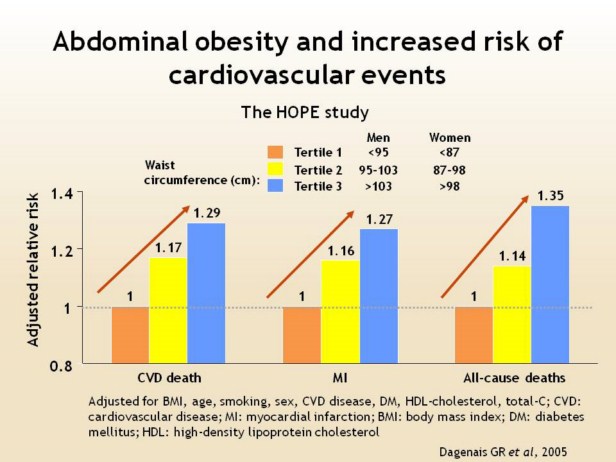| front |1 |2 |3 |4 |5 |6 |7 |8 |9 |10 |11 |12 |13 |14 |15 |16 |17 |18 |19 |20 |21 |22 |23 |24 |25 |26 |27 |28 |29 |30 |31 |32 |33 |34 |35 |36 |37 |38 |39 |40 |41 |42 |43 |44 |45 |46 |47 |48 |49 |50 |51 |52 |53| 54 |55|56 | review |
 |
This analysis from the Heart Outcomes Protection Evaluation (HOPE) study evaluated the effects of abdominal obesity (tertiles of waist circumference) on the risk of all-cause or cardiovascular death, or MI in 6,620 men and 2,182 women followed for an average of 4.5 years. Results were adjusted for BMI, age, smoking, sex, previous MI, stroke, peripheral arterial disease, microalbuminuria, use of antiplatelet agents, diuretics, lipid-lowering agents, and anti-hypertensives, history of hypertension, diabetes, or total cholesterol >5.2 mmol/L, or HDL-cholesterol <0.9 mmol/L. The risk of cardiovascular death, MI, or death from any cause increased in line with increasing tertiles of waist circumference. These data from this major intervention study add to the growing database of evidence linking high waist circumference with a clinically significant increase in the risk of an adverse cardiovascular outcome. |